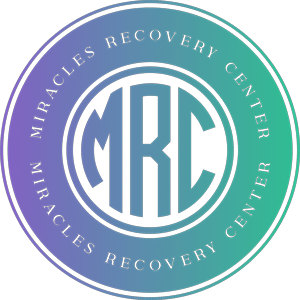[et_pb_section fb_built=”1″ _builder_version=”4.17.6″ _module_preset=”default” global_colors_info=”{}”][et_pb_row _builder_version=”4.17.6″ _module_preset=”default” global_colors_info=”{}”][et_pb_column type=”4_4″ _builder_version=”4.17.6″ _module_preset=”default” global_colors_info=”{}”][et_pb_image src=”https://miraclesrc.com/wp-content/uploads/2022/07/self-care-categories.jpg” alt=”wooden sign on a mountainside showing three categories of self-care body mind soul” title_text=”Six Categories of Self-Care” _builder_version=”4.17.6″ _module_preset=”default” global_colors_info=”{}”][/et_pb_image][/et_pb_column][/et_pb_row][/et_pb_section][et_pb_section fb_built=”1″ _builder_version=”4.17.6″ _module_preset=”default” global_colors_info=”{}”][et_pb_row _builder_version=”4.17.6″ _module_preset=”default” global_colors_info=”{}”][et_pb_column type=”4_4″ _builder_version=”4.17.6″ _module_preset=”default” global_colors_info=”{}”][et_pb_text _builder_version=”4.17.6″ _module_preset=”default” global_colors_info=”{}”]
We hear a lot about self-care these days. It’s everywhere from self-help magazines, to the news, and even in healthcare. Have you ever heard the saying “You can’t pour from an empty bucket”?
That’s exactly what self care is. It’s filling your bucket, so you can give to others and fill theirs.
There are so many ways to practice self-care that vary from person to person. So, what exactly is self-care and how can you implement it into your everyday life, relapse prevention, and recovery?
What is self-care?
In 1998, the World Health Organization defined self-care as “‘Self-Care is what people do for themselves to establish and maintain health, and to prevent and deal with illness. It is a broad concept encompassing hygiene (general and personal), nutrition (type and quality of food eaten), lifestyle (sporting activities, leisure, etc), environmental factors (living conditions, social habits, etc.) socio-economic factors (income level, cultural beliefs, etc.) and self-medication.’”.
All this means is, that it’s how we take care of ourselves. What we do for ourselves to keep us happy, healthy, and able to help others
What are the 6 categories of self-care?
Self-care can be split up into 6 categories. It’s important to practice a little bit from each category to have a well-rounded self-care routine.
Physical
Physical self-care is one of the most important aspects of a self-care routine. When we practice physical activity, it releases endorphins which make us feel good. It also produces neural growth, reduces inflammation in the brain, and promotes feelings of calm and positive well-being.
Exercising, or just physical activity in general is also helpful in treating a number of mental health issues we may suffer from. It helps anxiety and stress with the release of endorphins, relaxing the muscles and reducing inflammation in the brain.ADHD can be treated as well. Moving our bodies can improve motivation, attentiveness, mood, and memory by boosting the levels of dopamine, norepinephrine, and serotonin levels. Trauma & PTSD are also positively affected by physical movement.
When we think of the word “physical” we often go straight to movement. But, physical self-care is also about good sleep habits, drinking plenty of water, sitting in the sun to absorb that vitamin D, and taking care of your personal hygiene.
Practical
Practical self-care is things we do that help us to avoid stressful situations in the future. Everyone’s practical self-care will look different. But the goal for it would be the same-to save yourself from stress by performing tasks routinely.
Social
To be successful self-care needs to nourish us, and those around us. It is defined as “activities or events that nurture or deepen relationships with others.” Taking everyday activities and turning them into social self-care is a great way to keep your bucket full.
One of the most important aspects of social self-care is to ensure you are around people who nourish you, and lift you up. If you’re trying to practice social-self care with someone who pulls you down, your bucket is getting emptier. Which is the opposite of what you would be trying to accomplish.
Mental
Activities that stimulate your mind or your intellect are considered mental self-care activities. Mental self-care is paramount for a well-rounded self-care routine because mental health rules the rest of our self-care routines. If we are depressed, or feeling a lack of mental stimulation, we aren’t going to want to put effort into feeding other parts of ourselves.
Spiritual
Spiritual self-care is as complicated, or uncomplicated as you want it to be. Practicing spiritual self-care is about connecting with a higher power, searching for answers to your theological questions, and nurturing the yearning for a purpose.
Emotional
Activities that help you process, connect, and reflect on a full range of emotions are called emotional self-care. Emotional well-being is just as important as our mental well-being. It’s kind of the glue that holds us together. If we ignore our emotional health for too long, it becomes too much to bear, and it empties your bucket.
Feelings of stress, heartbreak, anxiety, sadness, guilt, and shame are all examples of feelings that could empty your bucket if you are left alone. Exploring your feelings through journaling, in therapy, or meditating can help to find the root of the emotion. Once you find the root, you can explore ways to heal.
Doing activities that promote happiness, joy, love, and connection are ways to keep your bucket filled, or fill it when it’s low. Finding small things that spark joy in yourself is a great weapon to have at your disposal for those times when you feel emotionally drained, too.
Creating a self-care plan
Since the start of the Pandemic, many people have struggled with keeping their self-care routines going. So learning new ways could help you achieve your goals. Creating a plan is paramount to ensuring the maximum benefits of your self-care efforts.
To be successful in creating, and sustaining a self-care plan, it needs to be individualized to your life, and needs. It has to be created by you and customized to include preventative measures to make sure you don’t get overwhelmed, burned out, or stressed.
Before you can create a plan, you need to have an honest look at your life, and where you are in each category of self-care. Then, you can map out which self-care activities feel right for you. You can use some of the examples below, or you can create a whole new approach.
How can I include more self-care into my life?
Now that we know a bit about each self-care category, let’s talk about some ways to incorporate more self-care into your life.
-
Physical
- Taking a walk
- Practicing abstinence from drugs & alcohol
- Practicing yoga
- Joining a gym
- Keeping a sleep journal and creating a sleep routine
- Taking vitamins and supplements
- Going to the doctor and dentist regularly
-
Practical
- Creating a chore list for yourself
- Following a budget
- Loading the dishwasher every night before bed
- Making lists for your week ahead
-
Social
- Pinpointing which people in your life add to your wellbeing
- Separating yourself from negative people
- Joining a kickball team with friends
- Eating meals with loved ones
-
Mental
- Taking a class to enrich your mind
- Reading books on topics you enjoy
- Learning about something new
- Listen to an audiobook or podcast
- Self-management education
-
Spiritual
- Finding your spiritual group
- Learning more about your religion or beliefs
- Practicing mindfulness techniques
- Write in a daily gratitude journal
- Going to a full moon drum circle
-
Emotional
- Learning how to manage emotional responses
- Practice positive self-talk
- Meditation practice
- Reflect on your day
- Learn to enjoy silence
- Individual or group therapy
How to get healthy enough to practice self-care
To put any of the self-care practices into place, you must first start with a healthy mind, body, and spirit. That means if you are suffering from an addiction, or mental health disorder, you must first get that under control. There are plenty of resources to help achieve this goal.
Most places, including Miracles Recovery Center in Port St. Lucie, FL have dual diagnosis treatment, holistic treatment, and therapies as well. Miracles Recovery Center believes that everyone is worth helping, and they are dedicated to making sure their patients have the best tools for long-term sobriety and emotional wellbeing. Giving the admissions coordinators a call, or sending them an email could be the first step in creating the best self-care plan for you!
[/et_pb_text][/et_pb_column][/et_pb_row][/et_pb_section]




